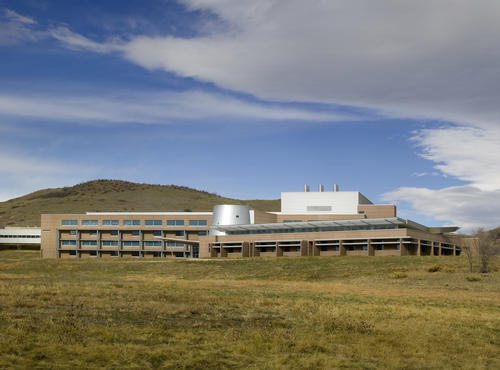|
Builders Challenge
The Builders Challenge''is a high-performance housing recognition initiative led by the U.S. Department of Energy (DOE) Office of Energy Efficiency and Renewable Energy through its Building Technologies Program.https://www.energy.gov/5985.htm The voluntary program with incentives was announced by the DOE on 14 February 2008. Through the Builders Challenge, participating homebuilders can more easily differentiate their high energy-performance homes from other less energy-efficient products in the marketplace by means of a standardized energy rating system. “Best energy-performing” is defined by the DOE as scoring 70 or lower on the EnergySmart Home Scale (E-Scale), that is, at least 30 percent more efficient than a typical home built per the 2004 International Energy Conservation Code.http://www1.eere.energy.gov/buildings/challenge/energysmart.html The Builders Challenge aims for 1.3 million homes scoring 70 or lower to be constructed by 2030 thereby saving $1.7 billion in ener ... [...More Info...] [...Related Items...] OR: [Wikipedia] [Google] [Baidu] |
Office Of Energy Efficiency And Renewable Energy
The Office of Energy Efficiency and Renewable Energy (EERE) is an office within the United States Department of Energy. Formed from other energy agencies after the 1973 energy crisis, EERE is led by the Assistant Secretary of Energy Efficiency and Renewable Energy (Assistant Secretary), who is appointed by the President of the United States and confirmed by the U.S. Senate. Kelly Speakes-Backman was appointed Acting Assistant Secretary in January 2021. Mission EERE’s mission is to drive the research, development, demonstration, and deployment of innovative technologies, systems, and practices that will (1) help transition Americans to a 100% clean energy economy no later than 2050 and (2) ensure the clean energy economy benefits all Americans. History EERE has been established from several previous agencies within the United States Executive branch following the 1973 energy crisis. It has foundations in the former agencies Federal Energy Administration, the Energy Resea ... [...More Info...] [...Related Items...] OR: [Wikipedia] [Google] [Baidu] |
International Energy Conservation Code
The International Energy Conservation Code (IECC) is a building code created by the International Code Council in 2000. It is a model code adopted by many states and municipal governments in the United States for the establishment of minimum design and construction requirements for energy efficiency. See also *EnergySmart Home Scale The EnergySmart Home Scale (E-Scale) is a standard applied to homes in the USA that meet the Builders Challenge program requirements. The E-Scale visually shows the energy performance of the labeled home. Homes need to score a 70 or less on the E-S ... References External links Web-Based Training by US DOEInternational Code Council Building codes Building engineering Energy conservation International standards {{engineering-stub ... [...More Info...] [...Related Items...] OR: [Wikipedia] [Google] [Baidu] |
Carbon Neutrality
Carbon neutrality is a state of net-zero carbon dioxide emissions. This can be achieved by balancing emissions of carbon dioxide with its removal (often through carbon offsetting) or by eliminating emissions from society (the transition to the "post-carbon economy"). The term is used in the context of carbon dioxide-releasing processes associated with transportation, energy production, agriculture, and industry. Although the term "carbon neutral" is used, a carbon footprint also includes other greenhouse gases, measured in terms of their carbon dioxide equivalence. The term climate-neutral reflects the broader inclusiveness of other greenhouse gases in climate change, even if CO2 is the most abundant. The term "net zero" is increasingly used to describe a broader and more comprehensive commitment to decarbonization and climate action, moving beyond carbon neutrality by including more activities under the scope of indirect emissions, and often including a science-based target ... [...More Info...] [...Related Items...] OR: [Wikipedia] [Google] [Baidu] |
Energy Star
Energy Star (trademarked ''ENERGY STAR'') is a program run by the U.S. Environmental Protection Agency (EPA) and U.S. Department of Energy (DOE) that promotes energy efficiency. The program provides information on the energy consumption of products and devices using different standardized methods. The Energy Star label is found on more than 75 different certified product categories, homes, commercial buildings, and industrial plants. In the United States, the Energy Star label is also shown on the Energy Guide appliance label of qualifying products. Elements of the Energy Star Program are being implemented in Japan, Taiwan, and Switzerland, as well as by Energy Star Canada. In 2018, a 15-year long agreement with the European Union expired. A previous agreement with the European Free Trade Association has expired. History The Energy Star program was established by the Environmental Protection Agency in 1992 and operates under the authority of the Clean Air Act, section 103(g ... [...More Info...] [...Related Items...] OR: [Wikipedia] [Google] [Baidu] |
EnergySmart Home Scale
The EnergySmart Home Scale (E-Scale) is a standard applied to homes in the USA that meet the Builders Challenge program requirements. The E-Scale visually shows the energy performance of the labeled home. Homes need to score a 70 or less on the E-Scale to qualify for the Builders Challenge. The E-Scale is based on the 2004 International Energy Conservation Code, with a 100 equating to a code built home. A home that scores a 70 on the E-Scale is 30% more energy efficient than a code built home. The E-Scale allows for an easy comparison between homes, very similar to a MPG sticker for a car but for a home. Homes meeting the Challenge will receive an E-Scale with a Sunburst displaying the E-Scale rating of the home, enabling home buyers to easily compare the energy performance of homes. The E-Scale ends at zero, which equates to the Builders Challenge goal to provide a “net zero energy home (NZEH) anywhere in the United States - a grid-connected home that, over the course of a year, ... [...More Info...] [...Related Items...] OR: [Wikipedia] [Google] [Baidu] |

.jpg)
.jpg)